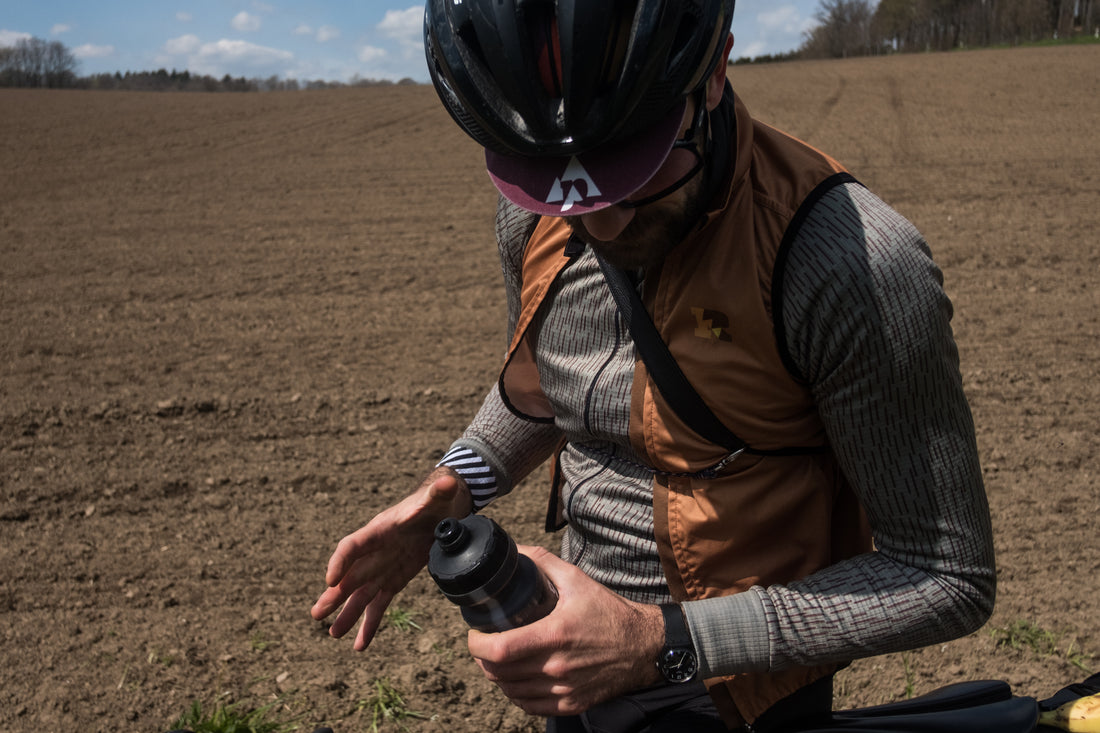
Now or Never
Share
Jonas Klock is speaking over a video call from the breakfast nook in his self-renovated Berlin apartment. With a working week featuring architectural and interior design projects, Jonas is also a seasoned bikepacker and enjoys pushing the boundaries of how far he can travel on two wheels. With his friend Robert Wegner and riding his custom Cicli Bonanno - the bike was handbuilt just a few streets from Jonas’ new home - the pair set off on a modern day pilgrimage to visit a wooden chapel designed by minimalist architect John Pawson.
Here, Jonas recounts the reasons he rides, the sense of escape this affords and how the bike can act as a safety valve when the pressures of life begin to build.
_______________________
Why the chapel? It's actually rather simple.
I'm an architect and always searching for inspiration - on blogs, Instagram or in magazines - and I find that small-scale architectural pieces in the middle of nowhere always intrigue me. Maybe it's a cabin perched in the Alps or a secluded sauna tucked away in the Norwegian woods—pretty much destinations that are a little tough to reach. So when I first saw this chapel a few years ago and realized it was in Germany, I remember thinking that it would make a nice ride.
With a window of available time and good weather forecast for the weekend - a case of now or never - I decided to see if my friend Robert wanted to join me on an impromptu bike packing trip.

We’d considered starting out from Berlin where we both live but the way down to Dresden isn't that exciting. So with our bikes packed - I’d made my own frame bag especially for the trip - we rode to the station and caught a train. Staying overnight at a friend's place, the next day saw us setting out for Bavaria and three straight days of cycling.
The distances involved promised a tough ride—a train back to Berlin fixing our time frame to cover the 450km and 7000m of elevation. And we'd planned a route that was 80% off road, so with heavily laden gravel bikes, it was a good test.
With a fixed destination, you’re keenly aware that every day you do less, means there's more on the next. So the first day we kept on riding after dark because the rough terrain and our heavy bikes hampered our average speed. But, luckily for us, we saved time by never needing to pitch the tents we were carrying as we found little cabins and shelters to sleep in.
With a journey underway, the process of letting go of the familiar just happens automatically. If you have your bike fully loaded and you know you have everything you will need, then there's a subtle change in your viewpoint. It’s a sense of living in the present and switching off all thoughts, save those that involve the trip—like a valve that closes off the white noise of modern living.

If you’re away for a week or longer, you kind of get into a daily rhythm: setting up camp, making dinner, packing everything up and riding to the next stop. But if your journey is only a handful of days, you're never that disconnected from everyday circumstances - the comfort of home and sleeping in a bed - so surprisingly there’s a greater sense of adventure. And even if it's pretty exhausting, you're mentally recharging.
Bedding down on our first night, the challenges of bikepacking were soon apparent when the temperature dropped below freezing. All day we’d been climbing, descending, climbing, descending - there wasn’t a single section where you could roll - and we were pretty high up in the mountains when we called a halt. Exhausted from riding the woodland trails and gravel paths, you cool down quickly, and we needed the extra layers we were carrying even though they took up a lot of space. But that’s part of the fun—to be as prepared as possible.
Waking to sunshine, day two proved warmer as we rode past colorful houses of the Bavarian border towns we’d routed through to allow for refills of food and water. But even with this brighter outlook, the relentless headwind that would dog our path for all three days proved a nagging reminder that we still had kilometers to cover.
Our third day saw us pushing hard, as we wanted to arrive at the chapel in daylight. Stopping at a supermarket to replenish our supplies, with loaded musettes we set off on the final 10km through the forest—eagerly awaiting that first sighting and the accompanying moment of relief that signals you’ve accomplished the reason for your journey.

Arriving at the chapel and celebrating the end of our trip with a beer, we took our time to explore the structure. Beautifully simple in execution, a concrete base rises along one wall to form a bench. On this foundation, the walls are formed from stacked tree trunks with interior illumination limited to light entering from the cross in the wall, a slit along the ceiling and the open window—a mystical atmosphere in which to unpack our sleeping bags and settle down for the night.
Catching the train the next morning, as we retraced our journey back to Berlin, my thoughts turned to why I love to push the boundaries of our rides and whether that's because my background in cycling is from racing. I'm not generally as outwardly competitive anymore, but I am competitive with myself. There's a sense of pride in achieving certain distances, and we still see a lot along the way—stopping to take photographs, to eat lunch or have a coffee. And then, those once in a lifetime opportunities like sleeping in a chapel. With Jesus' blessing, hopefully?
Photography by Jonas Klock and Robert Wegner
